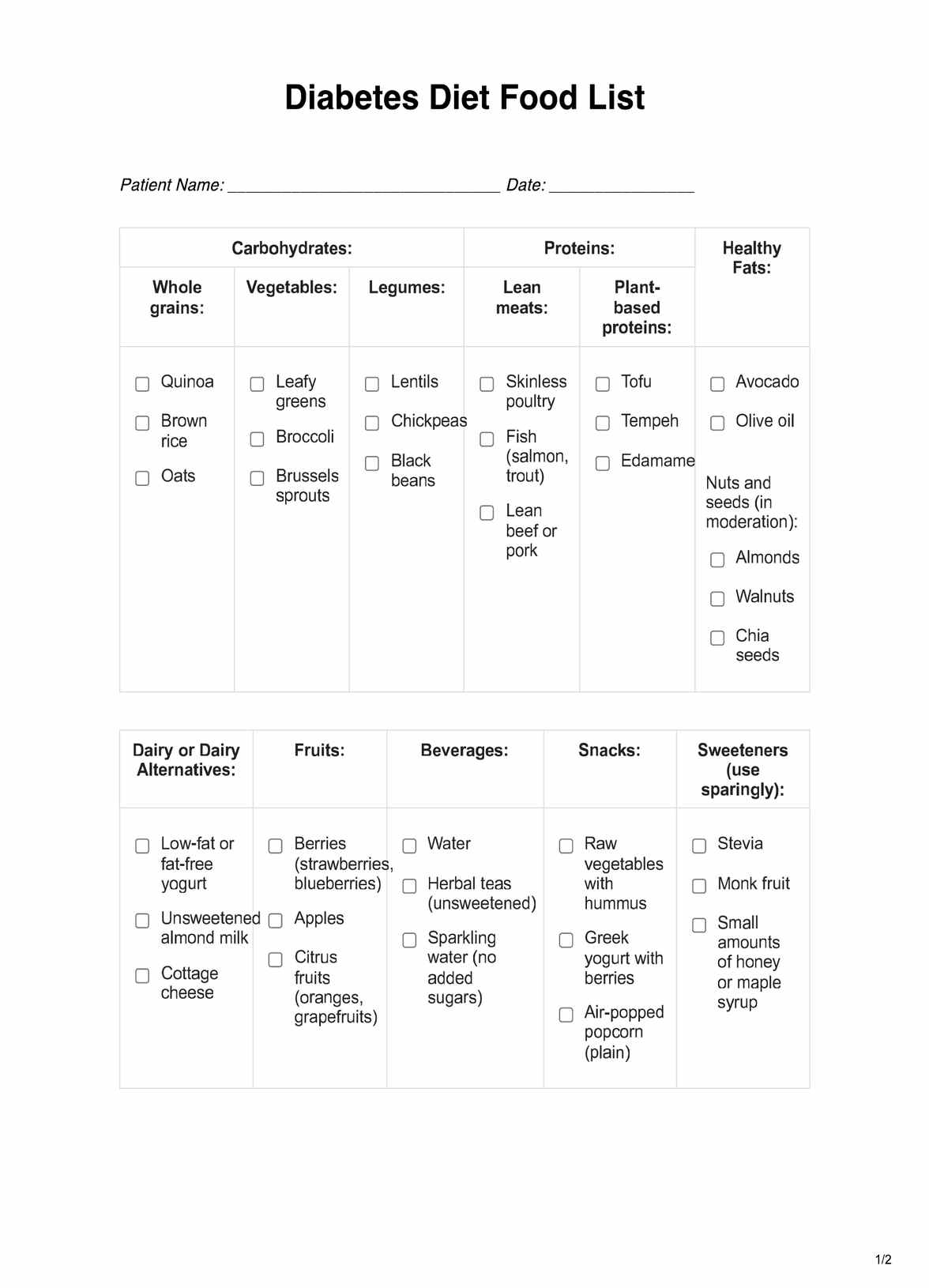A Diabetes Diet Food List is crucial for individuals with diabetes to make informed dietary choices. It assists in managing blood sugar levels, optimizing nutritional intake, and supporting overall well-being.

Diabetes Diet Food
Explore a comprehensive Diabetes Diet Food List for effective healthcare management, featuring essential foods to support balanced blood sugar levels.
Use Template
Diabetes Diet Food Template
Commonly asked questions
Healthcare practitioners can utilize a Diabetes Diet Food List to create personalized dietary plans, educate patients on suitable food choices, and monitor dietary adherence during follow-up appointments.
No, individual dietary needs vary. A Diabetes Diet Food List should be customizable to accommodate personal preferences, cultural considerations, and any existing health conditions.
EHR and practice management software
Get started for free
*No credit card required
Free
$0/usd
Unlimited clients
Telehealth
1GB of storage
Client portal text
Automated billing and online payments











